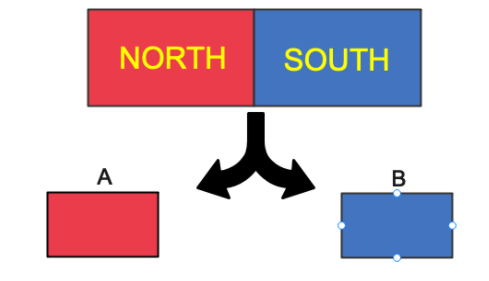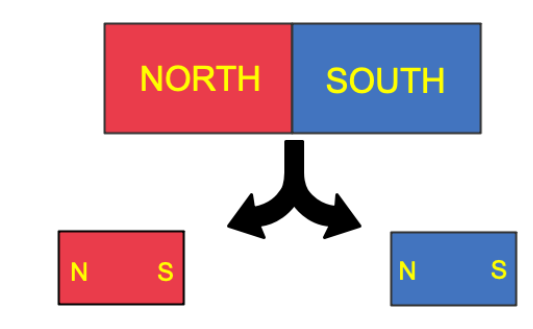
A bar magnet is cut into two pieces A and B, from the middle, as shown in the figure. Will the two pieces act as individual magnets? Mark the poles of these two pieces. Suggest an activity to verify your answer.


Answer
494.7k+ views
Hint: In order to solve the question we should have sheer knowledge about bar magnet. First of all according to the question we have cut the bar magnet into two pieces and then we have to examine whether the two pieces act as individual magnets or not. Along with this we have to mark the broken pieces poles and we also have to suggest an activity to verify that two broken pieces act as two different bar magnets .
Complete answer:
In the question we are given this diagram and we have to examine that when we have cut the bar magnet into two pieces and then we have to examine whether the two pieces act as individual magnets or not.
In this diagram we also have to mark the poles of the both broken pieces

Yes both the broken bar magnet will act as separate bar magnet which have their own north pole and south pole.
This diagram represent the poles of magnets as asked in question

Activity suggests that broken magnet act as separate magnets:
With the help of a repulsion test we can find out the ends of the magnets. So according to two questions we have two pieces of magnet when we put their ends together they start to attract each other We can identify the ends of the magnets by the test of repulsion.
Another example which supports that is when we use a compass magnet to find out the poles of the magnet shows that are broken it shows that broken magnets have their own poles.
Note:
There might be a chance of making mistake that which pole of the broken piece would be at which side this confusion is there because broken sides become the opposite poles though magnet was intact and but they get opposite polarities this is due to property of magnet.
Complete answer:
In the question we are given this diagram and we have to examine that when we have cut the bar magnet into two pieces and then we have to examine whether the two pieces act as individual magnets or not.
In this diagram we also have to mark the poles of the both broken pieces

Yes both the broken bar magnet will act as separate bar magnet which have their own north pole and south pole.
This diagram represent the poles of magnets as asked in question

Activity suggests that broken magnet act as separate magnets:
With the help of a repulsion test we can find out the ends of the magnets. So according to two questions we have two pieces of magnet when we put their ends together they start to attract each other We can identify the ends of the magnets by the test of repulsion.
Another example which supports that is when we use a compass magnet to find out the poles of the magnet shows that are broken it shows that broken magnets have their own poles.
Note:
There might be a chance of making mistake that which pole of the broken piece would be at which side this confusion is there because broken sides become the opposite poles though magnet was intact and but they get opposite polarities this is due to property of magnet.
Recently Updated Pages
Master Class 12 English: Engaging Questions & Answers for Success

Master Class 12 Business Studies: Engaging Questions & Answers for Success

Master Class 12 Economics: Engaging Questions & Answers for Success

Master Class 12 Social Science: Engaging Questions & Answers for Success

Master Class 12 Maths: Engaging Questions & Answers for Success

Master Class 12 Chemistry: Engaging Questions & Answers for Success

Trending doubts
What are the major means of transport Explain each class 12 social science CBSE

Which are the Top 10 Largest Countries of the World?

Draw a labelled sketch of the human eye class 12 physics CBSE

Explain sex determination in humans with line diag class 12 biology CBSE

The pH of the pancreatic juice is A 64 B 86 C 120 D class 12 biology CBSE

Explain sex determination in humans with the help of class 12 biology CBSE




